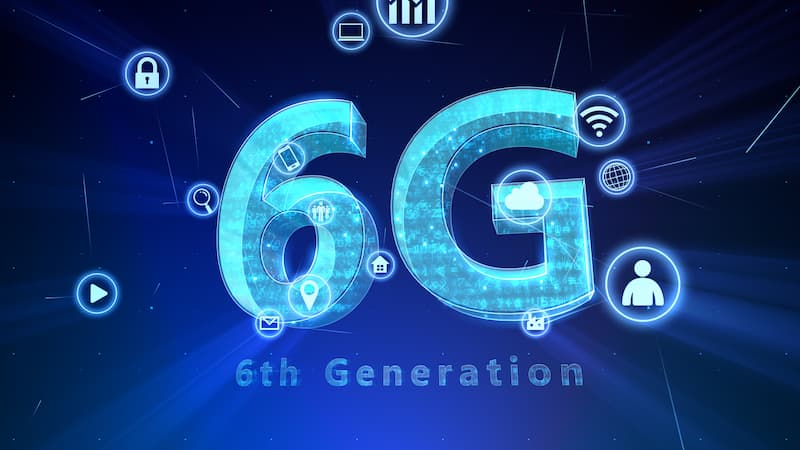What Is 6G, and When Can We Expect it?

5G has been a huge selling point in the last 12 months and more for mobile phone manufacturers. Several years ago, it caused a bit of a stir amongst the nation, with the fear of 5G towers causing health implications. However, with these rumours quickly being debunked, getting a phone on 5G became the key selling point for new devices.
However, what still feels like a new element to smartphones, is slowly becoming old news with the developments in 6G hitting the headlines. As a phone recycle facility, we are excited to learn about new developments, so join us as we explore what 6G is, what to expect and when you should consider a mobile phone trade-in to upgrade to a device with the latest mobile connection.
What exactly is “G” all about?
5G seems to be all mobile phone companies talk about at the moment; however, many smartphone users aren’t quite fully understanding what it means other than offering quicker connections. Essentially 5G is just the 5th generation of mobile networks, which is where the “G” comes from. The first mobile network was designed to offer basic voice calling services and was introduced in 1979 by Nippom Telephone and Telegraph Company.

Before this network was introduced, radio cell towers were used, and before this, telephone operators would connect you using a switchboard. However, as the demand for mobile networks increased with mobile phones, they needed to have their own towers. Since then, there has been an array of developments.
The growth of mobile networks
2G was introduced in 1991 and used a digital network connection which allowed mobile phones to send text messages and provided a better capability for more connections. However, the most significant development in mobile networks stood with the introduction of 3G in 2001. This allowed much faster data transfer, clearer voice quality, and easier internet connection. Although the internet was accessible through 2G, it was limited by its speed and capabilities. For those born before the millennium, you may remember the panic of pressing the internet button and being charged. This quickly faded with 3G. The 3rd generation of networks offered smoother connections and quicker access.
Since the introduction of 3G, mobile networks got faster and better for connecting people worldwide. 4G offered a higher definition of video content and gaming services and provided even faster internet speeds. As of 2021, it remained the standard telecommunication network for 58% of the market. However, with the growth of 5G, this is expected to fall significantly over the next four years. 5G further increases internet speed to allow seamless video content, significantly improves poor connections, and reduces dropped calls.
So, 6G. When can we expect it?
Now we have given you a brief understanding of mobile networks and what each generation has offered users, we can delve into 6G and when we can expect it. As we know, 5G is still relatively new. The first introduction was in 2019 by the EE network, which has paved the way for other networks ever since. However, with some areas still not up to speed with the new technology, 6G is far from being developed and rolled out for smartphone users.

Whilst many mobile networks are still rolling out their 5G, 6G is already being established by privately and publicly funded projects worldwide. Governments are making headway into being the first to have developed the network for commercial rollout. China has already launched its 6G satellite into space, and Samsung and Nokia are leading the way in South Korea and Europe. The UK’s 6G developments are currently taking place in the 6G Innovation Centre at the University of Surrey.
However, each of these ongoing projects is still in its early stages, with no expected timescale officially announced. The only project which has offered a guess into accessibility is Samsung, which believes it could be as early as 2028, but generally, 6G isn’t expected to be fully rolled out until 2040. This means there’s no need to worry about ditching your 5G phone just yet.
What will 6G offer over 5G?
As this technology is still in its early days, there is no telling exactly what to expect with the 6th generation of mobile networks. However, the constant advancement throughout the generations is speed. It is safe to assume that 6G will offer much greater speeds than the already impressive 5G capabilities. Another consistency is the expansion of data transfer ability. With each network improvement, there has been an expansion in the ability to transfer larger amounts of data. With 5G again already offering a significant improvement on this, 6G could potentially bring some of the science fiction dreams to life.
For example, although 5G currently offers optimisation with AI, 6G, we imagine, will expand on this further, creating more humanisation of self-improvement. It will blur the lines between reality and a digital world. For example, instead of Zoom meetings, it could offer in-person communication with virtual reality much more lifelike than currently available.

However, the most significant expectancy of 6G is the ability to access remote areas much easier. Ships at sea will have more accessible connections, so if you are jet-setting worldwide, you can still share your adventure online, even in the most remote areas. Of course, for the time being, most of this is a guess at what is to come, but one thing is for sure: technology will only become better and more advanced in the next few years for mobile network capabilities.
Should I upgrade to 5G or wait until 6G?
We know that changing your smartphone can be a hassle, and for some, the appeal to swap each time a new device is brought out just isn’t there. However, it may be time to switch if you are still hanging onto your old phone, which does not cater for anything passed 3G. In order to make way for these new networks, many providers are switching off their 3G masts. The UK has a deadline to switch off any 3G networks by 2025. EE has confirmed it will retire 3G in 2023, with Vodaphone already turning it off in various locations.
Don’t worry, though. Most mobile phones manufactured after 2010 have 4G capabilities. Still, the first phone with 5G capabilities was only released in 2019. This means unless you have recently purchased a phone in the last four years, you could be missing out on the super-fast speeds of 5G and the quality it can offer your calls, video and other content. Using our sell my mobile services, you could trade in an iPhone or other Android smartphone and get the money to help you upgrade to a newer device. Why not take a look at how it works and get a quote today for your old 4G phone to help you take a step into the future of 5G?

